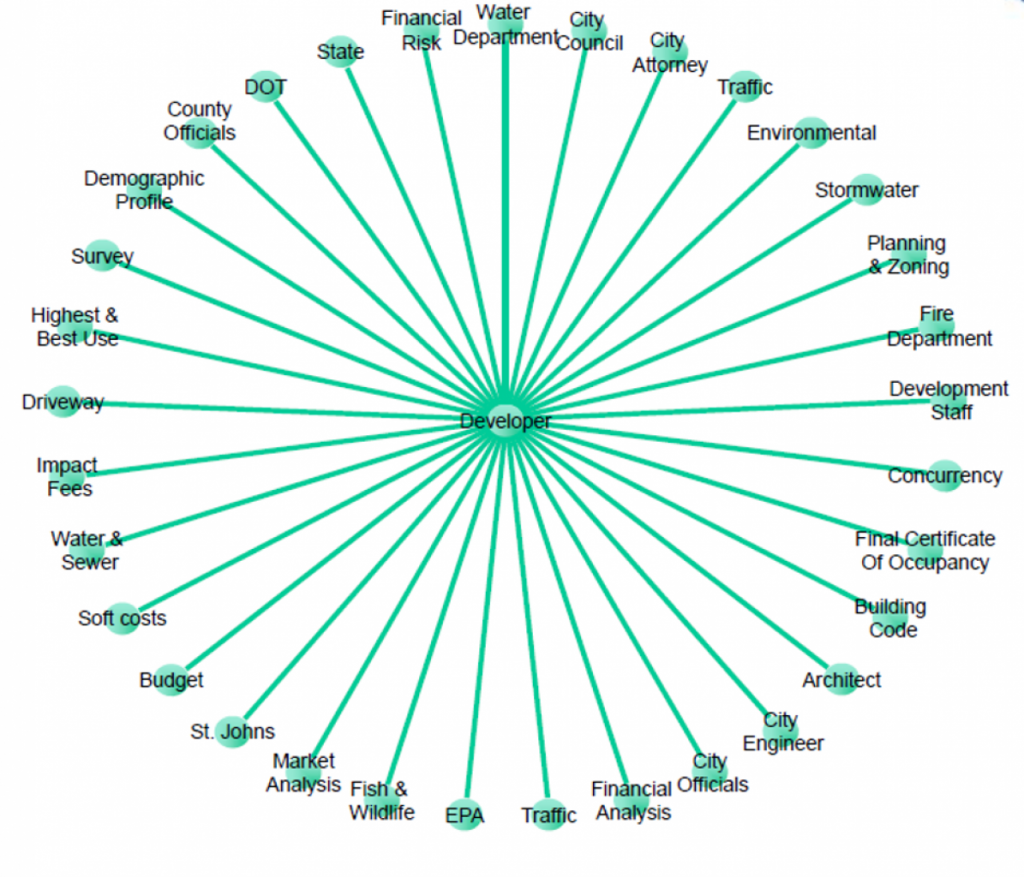How a Design Build Team Embodies “Time is Money”

The age-old adage “time is money” absolutely applies to commercial development and construction. That is why John Wanamaker, CCIM, broker and owner of Coldwell Banker Commercial AI Group in central Florida is a strong proponent of the “Design Build” concept.
Design Build is a term used to label a method of project delivery in which an entity, the Design Build team (which can be comprised of varying number of team members) works under the authority of a contractual relationship in which the project leader (or Design Build team) provides services. The contract between the parties determines the services that will be provided to the client.
Over the last 20 years, Wanamaker has completed about 70 Design Build projects. Wanamaker was a developer and one of his commercial practitioners is also a licensed architect and general contractor, so they can offer services from start to finish. In addition to the skills they bring to the table, CBC AI Group also works with their client’s team of experts or assists the client with assembling a team.
“Big companies and developers already have design teams in place to efficiently serve the client, but smaller brokers can do it, too.” Wanamaker said.
What are the advantages of engaging in Design Build for the client and for the commercial brokerage? There are many. Just talk to Wanamaker, and you get caught up in his passion. The benefits of using Design Build are manifold. For example, the client has one point of contact. A Design Build team will find the site, check zoning, guide the client through the intricacies of finances, negotiate the contact, navigate the government and zoning regulations, and even coordinate the grand opening.
Wanamaker created an image to illustrate the value and process of hiring a Design Build team.

Since time is money, having one point of contact as the hub of this wheel to evaluate, research, plan, and execute the entire process is critical. The wheel won’t move forward without a hub. In fact, without the hub, or Design Build team, all the spokes just lay flat in disorganized chaos, going nowhere.
There is a clear order of steps. First, a needs analysis should be completed.
- Keys to a successful development must be discussed and established.
- To build or not to build. Is it better to own or lease? This question needs to be answered early in the process. Because Wanamaker has his team structured to cover all aspects of the industry, if the client determines leasing is better, then Wanamaker can still help the client achieve their outcomes.
- Time is money, so the Design Build team assists the client in navigating the financing maze, which also includes building a financial model with projections. The Design Team may put the financing out to bid. The goal is to eliminate risk, so ideally the client will receive preliminary loan approval. If the client cannot secure financing, there is no need to proceed.
- Legal and Accounting. You cannot underestimate this step because it impacts the entire project.
- Site Due Diligence. Supply and demand come into play as part of site selection. For instance, the Design Build team may find an existing structure that can be rehabbed or modified to meet the needs of the client. If that is the case, then a rehab usually takes less time than building from raw land, and time is money. The end cost may be less then new also.
- Site Plan and Approval. If the Design Build team is local, then most likely they are connected and know the players and decision makers and can steer the most effective course of action and application.
- Architectural Rendering. The client’s needs are considered but so are other variables, like building wellness, environment and protected species, and more. The Design Team engage experts in these nuances.
- Construction oversight is key to controlling costs and identifying value engineering opportunities.
“You don’t want a project submitted multiple times to the municipality, because the city staff get frustrated and the client gets annoyed, so you have to have an expert guiding the process,” suggests Wanamaker.
Wanamaker said there are times when a client does not move beyond the pre-development phase because it is not the right path for them to take. Attention to detail and diligence in the market analysis are keys to the success of the project so all parties can make informed decisions throughout. Remember time is money.
“We have never had a project that didn’t come in on budget or that was discovered to be unbuildable because of the sequence of our process,” Wanamaker stated.
A Trusted Guide in Commercial Real Estate
Coldwell Banker Commercial® provides Commercial Real Estate Services from Property Sales and Leases, to Property Management. Learn how our expansive network of Independently Owned and Operated Affiliates and Real Estate Professionals use their in-depth knowledge of the local market and industry trends to help businesses and investors navigate the complexities of the commercial real estate landscape.






